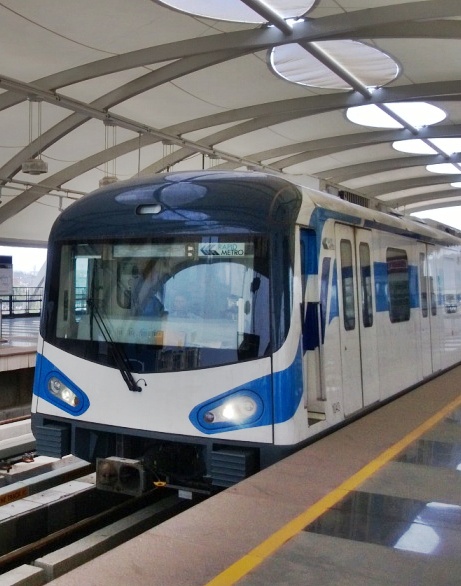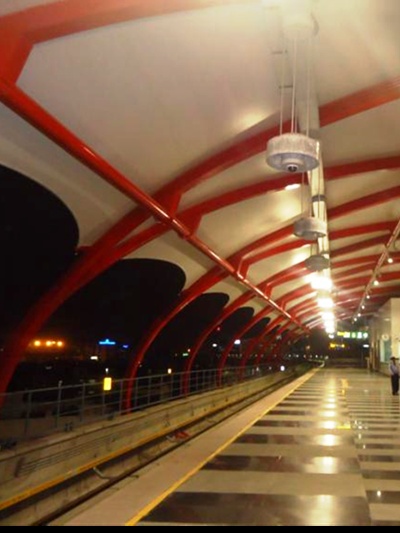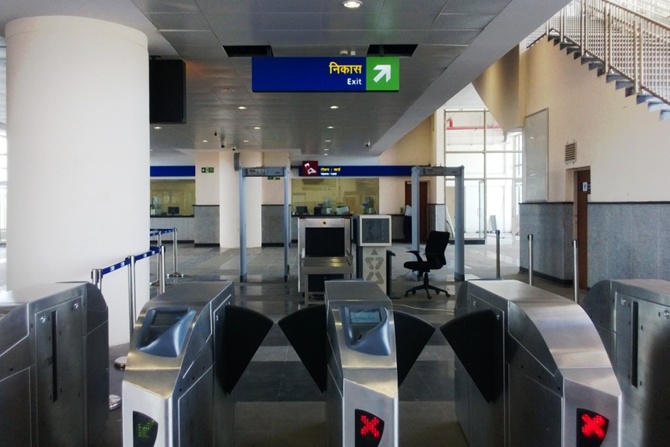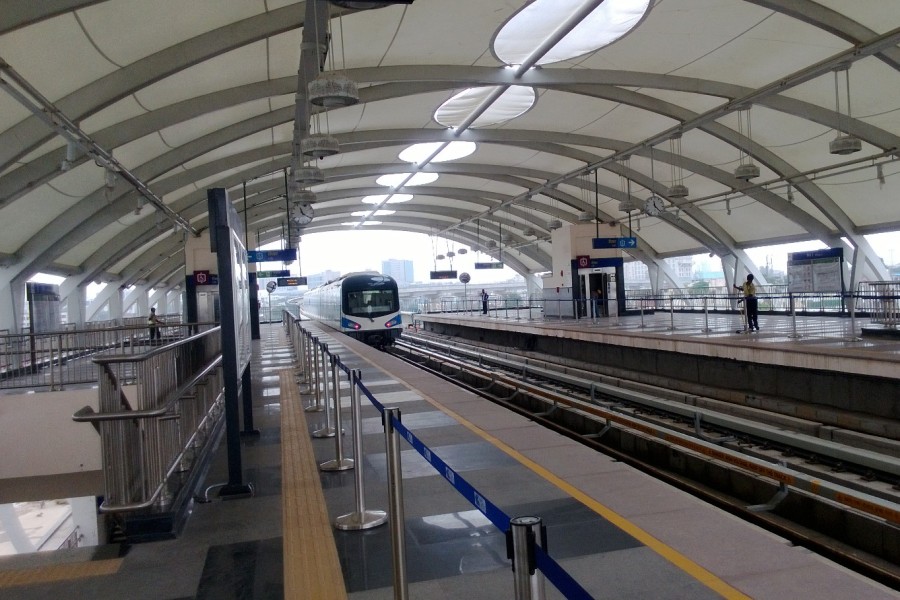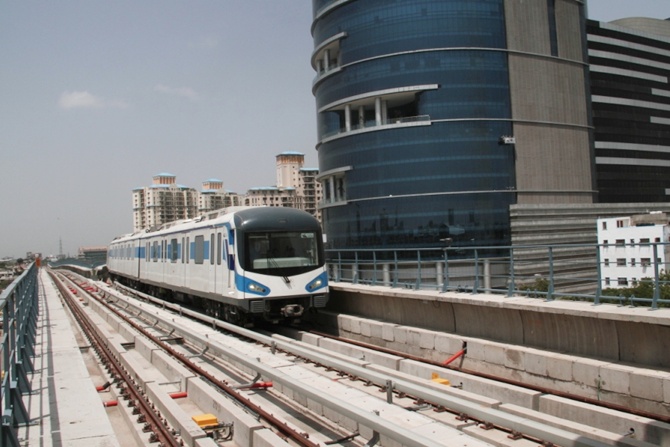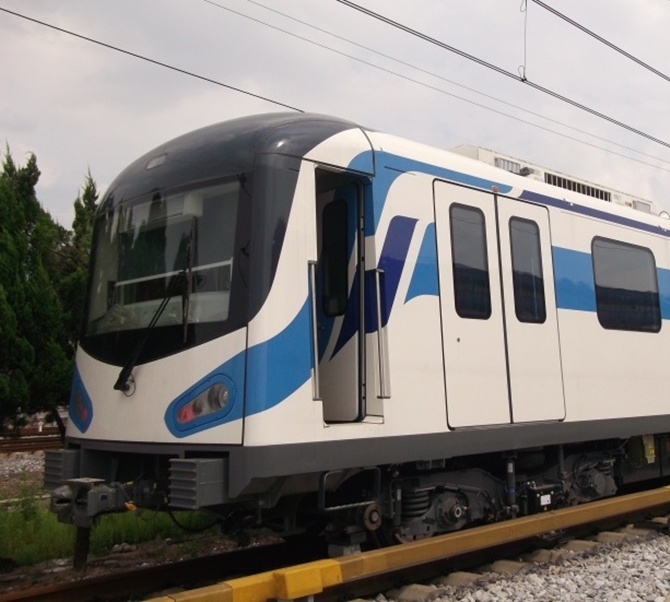 | « Back to article | Print this article |
What makes Gurgaon Rapid Metro a unique project
The country’s first privately-funded metro project, if successful, could spark a new trend in urban transport
It might be a ride of less than 15 minutes, cost just Rs 12, stretch over all of 5.1 km and be just a week old, but it is the boldest metro experiment in the country.
If Gurgaon’s Rapid Metro, which connects the Delhi Metro with Cyber City, the suburb’s commercial hub, succeeds, it could change the face of urban transport in the country.
To begin with, it’s the only privately-funded public metro anywhere in the world. The project was initially conceived as a collaborative venture between real estate developer DLF and Infrastructure Leasing & Financial Services, or IL&FS.
But DLF, facing financial problems, pulled out and IL&FS became the sole owner. The venture thus does not have any investment by the central government, Haryana or any other public sector undertaking.
Click NEXT to read more…
What makes Gurgaon Rapid Metro a unique project
It has raised the entire money for building and operating the project on its own balance sheet, without any guarantee or viability-gap funding from the government. And it did not even get the 20 acres of land which it needed for the project at any concessional rate from the state.
In contrast, the Kolkata Metro was owned fully by the Indian Railways. The Delhi Metro was a 50-50 venture between the Delhi government and the central government. In the first phase of the Mumbai Metro, the Mumbai Metropolitan Region Development Authority took a 26 per cent stake, while Reliance Infrastructure and others owned the rest.
And in the Delhi Airport Express project, Delhi Metro invested in the civil construction, while Reliance Infrastructure invested in coaches, signaling equipment, tracks et cetera and got the concessions to run it. “It’s a unique business model,” says Sanjiv Rai, managing director of Rapid MetroRail Gurgaon Ltd, or RMGL, with evident pride.
Click NEXT to read more…
What makes Gurgaon Rapid Metro a unique project
Distinguishing features
RMGL’s project is different in other ways too. It’s the first time any state government has granted a 99-year concession to operate a project. Most public-private partnerships have a 30-year concession period which is renewable for another 30 years.
In the second phase of the Mumbai Metro, the concession is for 45 years. But a 99-year concession is unheard of. This, Rai says, is also the first time that a consortium of banks, led by Andhra Bank, has given a loan for a period of 17 years and nine months to a metro. In all other projects, the loans have tenure of not more than 15 years.
The Rs 1,100-crore project is funded seven parts by debt and three parts by equity. The debt carries interest of 13 per cent per annum, though there is a moratorium of two-and-a-half years on the repayment of the principal.
Rai hopes to reduce the cost of funding by floating 30-year bonds, once the government permits it. This is in tune with the 30-year tenure of the loan given by the Japanese International Cooperation Agency to Delhi Metro.
Click NEXT to read more…
What makes Gurgaon Rapid Metro a unique project
Rai says by the end of the first year, he expects over 90,000 commuters to travel every day on the metro. And by merely changing the frequency of the trains, he can accommodate as many as 250,000 to 300,000 commuters every day without any sizeable investment. Rai expects to break even in the sixth year of operations on the current investment.
Meanwhile, the company has started work on the second phase which connects Delhi Metro with the second commercial hub of Gurgaon on the Golf Course Road. This stretch will be 6.6-km long and will cost double the amount of the first phase: Rs 2,143 crore.
At Rs 329 crore per km, it will be amongst the most expensive metro projects in the country. Rai, however, says that the huge increase in cost is because the line will be longer and it will have seven trains (compared to five in the existing line). Moreover, inflation is expected to take its toll on the cost because the project will take three years to build.
But many say that Rai’s ambitious projection of ridership will be difficult to achieve. More than one week after starting operations, the average ridership is just 10,000 a day.
Click NEXT to read more…
What makes Gurgaon Rapid Metro a unique project
Even if the numbers increase ten times in a year, the company, given the ticket of Rs 12, will make Rs 12 lakh a day and less than Rs 4 crore a month. This might not be enough to pay the monthly interest outgo of Rs 8.24 crore (13 per cent annual interest on a debt of Rs 761 crore).
But Rai says that does not concern him as a similar trend was seen when Delhi Metro began service: commuters take time to get used to a new alternative.
With 26 million square feet of office space in Cyber City, there is a large market. Offices work in two or even three shifts here. It is estimated that 250,000 people troop in for each shift. Parking is a nightmare. Many offices have taken paring slots inside faraway malls and run buses to ferry employees from there to the premises in Cyber City.
The demand for an inexpensive metro service is surely there. “We are talking to all companies in the location to offer an alternative to the taxi and bus services which they offer to their employees, which will save them costs. They could also use it partially,” says a senior RMGL executive. He also says the company is wooing commuters who currently spend Rs 100 a day on parking in Cyber City to take a more viable alternative.
Click NEXT to read more…
What makes Gurgaon Rapid Metro a unique project
Another big market is Udyog Vihar which lies across the busy highway (which connects Delhi to Jaipur) from CyberCity. It is estimated that an equally large number of people work there.
To tap into this market, RMGL has tied up with the Haryana government which will run 35 air-conditioned buses from Udyog Vihar to one of the metro stations. It is also talking with the state government as well as industry associations to pool in money to build a skywalk over the highway to connect Udyog Vihar to the metro. The skywalk would cost Rs 10 crore.
Higher tariffs
The company is also hopeful that the tariff will go up in the days to come. That’s because its tariff is linked to that of Delhi Metro. And Delhi Metro is known to revise its tariffs every three or four years. As the current tariff was fixed three years ago, it expects an increase as early as next year.
In the past, Delhi Metro has raised tariffs 25-26 per cent at one go; so it expects a similar increase next year too. Rai says: “The average annual increase comes to 6 to 7 per cent. That has been built in to our revenue projections.”
Click NEXT to read more…
What makes Gurgaon Rapid Metro a unique project
RMGL is also eyeing non-tariff revenues, which it expects will contribute 10 to 15 per cent of its overall revenues, despite the limited real estate play that it has been allowed.
The company has offered companies entire stations to brand (there are five stations at the moment; the sixth will be operational by March next year), for which it has already roped in big spenders like Vodafone and Micromax with a contract ranging from three to five years.
It is also branding the trains and has got on board companies like real estate developer 3C, car maker Skoda and American Express.
Rai says that the company has already sold about 50 per cent of its advertising inventory. The company also has permission, according to the concessions agreement, to utilise 250 square metres of space in each station to set up retail outlets; it has already got a pharmacy store open.
Click NEXT to read more…
What makes Gurgaon Rapid Metro a unique project
What will also help is that RMGL does not have to share the ticketing revenue with the Haryana government. The only thing it has to share with the state is a nominal 5 to 7 per cent of its non-ticketing revenues. It will work out to less than 1 per cent of its overall revenue.
So can the new model be replicated in other cities? Rai says that he is getting queries from other states and cities like Lucknow and Ludhiana which want to look at a similar model.
But he says that a privately-funded metro project can only work if it has a large catchment of commuters. If the experiment in Gurgaon works it could blaze a whole new trail - not just in India but across the world.
